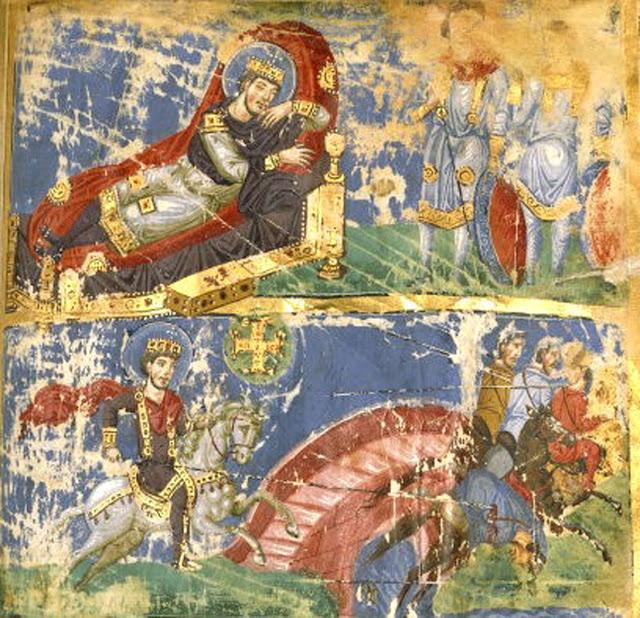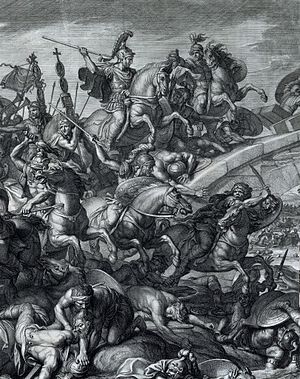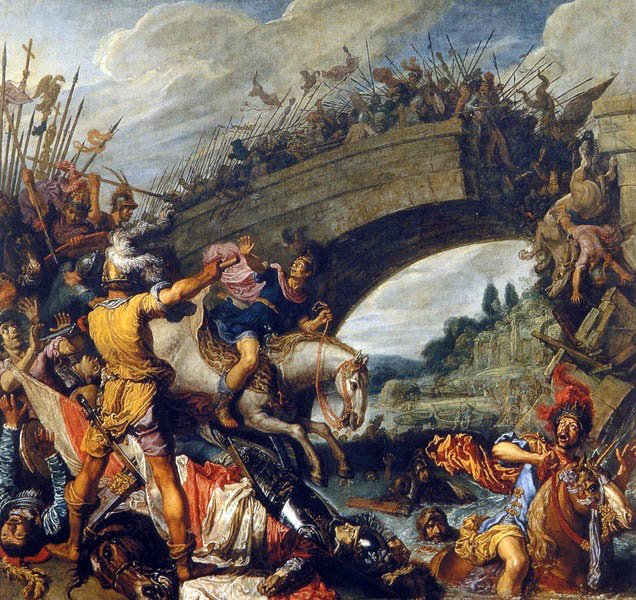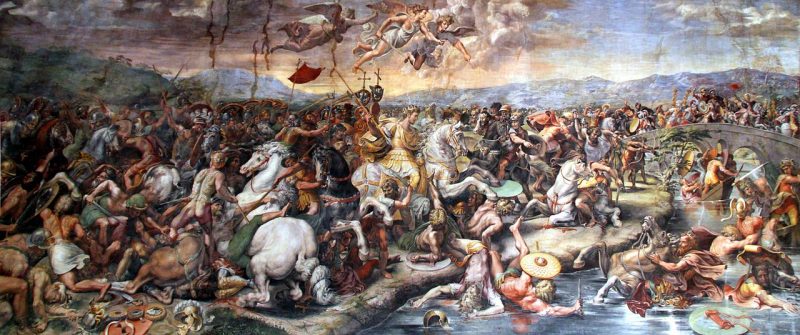On the morning of the 28th of October, 312, a decisive battle between the future Roman emperor Constantine and Maxentius took place near the Milvian Bridge of the River Tiber, not far from Rome. The battle followed numerous political intrigues in the Tetrarchy and several military clashes. Winning the Battle of Milvian Bridge not only solidified Constantine as the sole ruler of the Empire but also cemented Christianity’s place as an official religion.
The End of the Tetrarchy
After Diocletian divided the Roman empire in three in 298, each of the three regions was assigned to a separate dominus and all of them together ruled the enormous empire. In 306, the western parts of the empire were under the rule of Constantine. He was the dominus of Britain, Gaul and the Iberian Peninsula. The southeast dominions were under the rule of Maxentius, and the eastern lands were governed by Licinius.
In 312 a feud between the two ruling emperors, Maxentius and Constantine, was already in motion. Maxentius, who was also a brother-in-law of Constantine, claimed that the other was responsible for the death of Maximianus – father of Maxentius. Seeking revenge, Maxentius decided to start a campaign and remove Constantine from his position as ruler of the Western Roman Empire.
Initial Movements of the Armies
Constantine did not wait for Maxentius to come and fight but took the advice of his own entourage. Instead of preparing for defense, he alone took the offensive and advanced to Rome. Maxentius’ popularity and support in his parts of the Empire proved so fragile that there was not much resistance to the advancement of Constantine. Crossing the territories of the Italian cities was more than easy for him, as nobody tried to stop his march towards Rome. After a few small clashes, Constantine was already under the walls of Rome.
Nevertheless, the forces of the western ruler were significantly smaller than those of his enemy. Maxentius had approximately 120,000 men, while Constantine’s forces counted somewhere around the 90,000 to 100,000 men.
Maxentius not only outnumbered Constantine but he also held the heavily fortified city of Rome, with walls that could withstand sustained attacks for some time. Evidently Maxentius chances of victory from a tactical point of view were better than those of his enemy. However, his poor reputation and the quickly fading support of the empire changed everything.
The reason for Maxentius abandoning the safety of the city walls is still debated. Even after preparing for a siege, something – perhaps something he perceived to be a prophecy or an omen – made him leave the city. On the other hand, there is a possibility that he chose to engage in open battle in order to win back the favor and respect of the empire.

With these circumstances, Maxentius chose the site for the battle he thought would be favorable to him – the Milvian Bridge. The bridge itself carried one of the most important roads to Rome and was built over the river Tiber. Maxentius surely thought that his numerical superiority and good positioning are all he needed, but he had little to no idea that Constantine’s weapon was far more effective.
The day before the Battle of Milvian Bridge is believed to be of great significance for the Christian faith. Emperor Constantine claimed to have had a vision in which he saw the Christian cross and the words “In hoc signo vinces” – or “In this sign, [you shall] conquer”. Before the battle, the emperor shared this promise of a great victory with his men, who were instantly motivated by the vision of their leader, and even painted crosses on their shields. Now, Constantine not only had well-experienced men fighting alongside him, but he was strengthened by these beliefs.
The Battle at Milvian Bridge

On the 28th of October, the legions of Constantine and Maxentius clashed. Constantine’s legions pushed Maxentius’ forces back after the latter tried to cross the river.
Maxentius now lacked the space to regroup, and with his men disarrayed on the river bank, they stood no chance of effectively repelling the advancing army of Constantine.
Constantine sent his cavalry to beat back the defenders’ horsemen. Maxentius’ mounted units were broken swiftly and Constantine’s infantry advanced to finish the job. Although the men who fought for Maxentius struggled bravely, they could not withstand the forceful attack and began to lose more ground. With his army’s back to the river, Maxentius decided to try and break off towards Rome.
However, there was only one way he could return to the city. He had to cross a bridge that had been built alongside the Milvian one as a temporary measure, after the main bridge was damaged in the fighting.

The retreat did not go as Maxentius hoped, for Constantine’s legions mercilessly slaughtered his men while they were desperately trying to cross over. Unfortunately for the troops of Maxentius the temporary bridge collapsed under their feet. Those who didn’t drown after the bridge gave way were either killed or taken prisoner.
It is believed Maxentius died during his own unorganized retreat. According to the sources, he drowned in the Tiber, thrown from his horse, or while swimming to the other bank.
The Edict of Milan
Constantine entered in the city of Rome triumphantly on the 29th of October as the one leader of the Roman Empire. In 313, Constantine and Licinius declare that Christians could exercise their religion freely within the empire without fear of prosecution. This was known as the Edict of Milan and following this event Christianity became a resepcted religion in the lands of the Roman Empire.
Image sources: Wikipedia and Historynakratko
